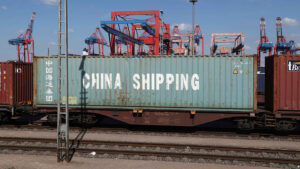Understanding Recent Tariff Developments: Insights from Extreme Investor Network
In the ever-evolving landscape of international trade, the recent developments surrounding U.S. tariffs warrant a closer look. As highlighted in a recent report, U.S. Customs and Border Protection (CBP) has provided data that seems to conflict with statements made by former President Donald Trump regarding tariff revenues. Here at Extreme Investor Network, we believe it’s crucial to delve deeper into these complexities and understand their implications for investors and businesses alike.
A Closer Look at Tariff Revenues
On April 15, 2025, U.S. Customs announced that it had collected over $500 million under newly implemented reciprocal tariffs since April 5. This brings total revenue from various trade actions to over $21 billion — a figure reflecting 15 distinct trade actions initiated since January 20, 2025. These tariffs stem from the Trump administration’s aggressive trade strategies that have reshaped import policies significantly.
However, it’s essential to note that Trump previously asserted that the U.S. was bringing in a staggering $2 billion each day from tariffs, a claim that appears inflated based on the latest figures. The Treasury Department’s report indicated a daily deposit from customs taxes of roughly $305 million — far less than the figure touted by Trump. This discrepancy highlights the challenges in accurately assessing the impact of tariffs on U.S. revenue and raises questions about the sustainability of such revenue streams.
The Glitch: What It Means for Importers
Further complicating the issue was a 10-hour technical glitch in the CBP’s finance system, which prevented importers from applying for code exemptions on freight that was already en route before the increased duties kicked in. Despite this disruption, CBP stated that they continued to collect approximately $250 million in revenue daily, showcasing the resilience of the revenue system during operational hiccups.
For businesses relying heavily on imports, such glitches can have significant effects on cash flow and operational planning. Importers must remain vigilant and proactive in their logistics to minimize the impact of sudden tariff changes and system outages.
A Shift in Trade Policies
In early April 2025, the Trump administration rolled out substantial tariffs impacting multiple countries, only to reduce some rates to a universal 10% shortly thereafter—excluding China, where tariffs were heightened even further. Businesses in sectors such as automotive are particularly affected, facing ongoing tariffs that complicate supply chain dynamics. Understanding these layers of tariff application and exemption is crucial for companies strategizing their trade operations.
What’s more, the administration’s focus on pharmaceuticals indicates that we might see more targeted tariffs in the near future, especially as the U.S. seeks to recalibrate its trade balances with global partners. Investors must stay alert to these changes, as they can directly affect market conditions and sector performance.
Conclusion: Insights for Investors
At Extreme Investor Network, we believe it’s essential for investors and businesses to stay informed about these developments to navigate the complex terrain of global trade effectively. As tariff policies evolve, so do the implications for profitability, logistics, and financial planning.
Understanding the nuances behind the numbers and the policies can significantly aid businesses in developing informed strategies that not only mitigate risks but also capitalize on opportunities in the shifting international trade environment. As always, we’ll continue to provide in-depth analysis and insights that matter to your investment decisions.
Stay tuned for more updates and insights from Extreme Investor Network as we keep you informed about the changing landscape of business and trade.

